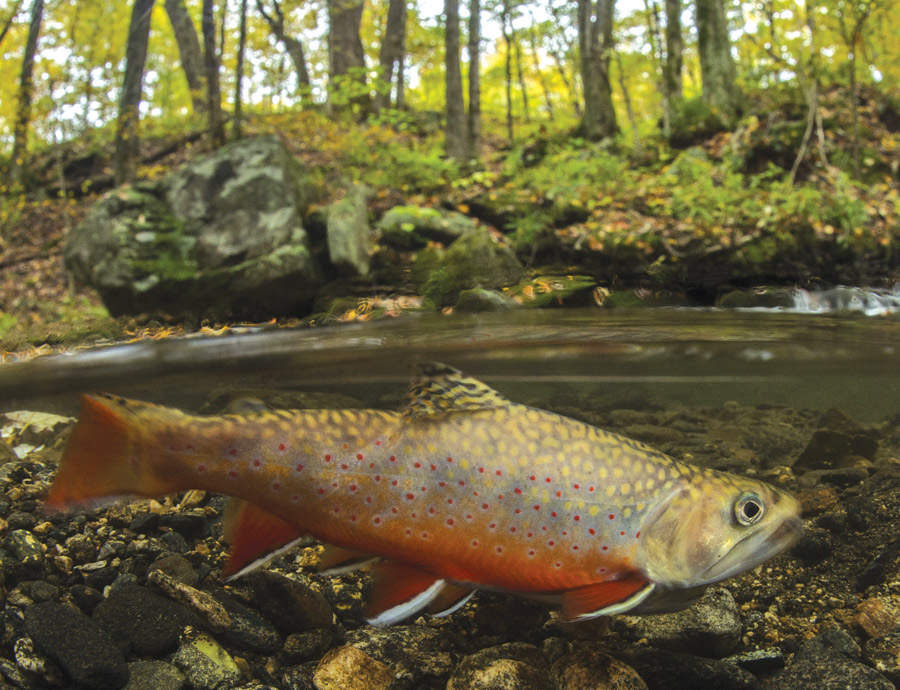When juxtaposed against the geologically younger and more visually stunning Rocky or Sierra Mountain chains, the humble southern Appalachians have been called rolling hills.
But one essential piece of the puzzle that outside detractors commonly fail to connect — aside from world-class mountain biking, celebrated backpacking routes, premiere fly fishing and top-notch whitewater — is its unparalleled biological diversity.
At the ripe old age of 260 million years, the Appalachians have seen a lot, and they have developed an impressive biological narrative in the process.
The Southern Appalachians once bordered a barren glacial landscape, and many species found refuge here. The modern result of nature’s ice age mercy on Southern Appalachia is one of the most biologically diverse regions in the temperate world.
With 8.2 million acres of migratory habitat for neotropical birds, more salamander species than any other place on earth, 33,000 miles of wild trout streams and some 190 aquatic species that are either endangered, threatened, or of special concern, today’s Southern Appalachia is a region worth protecting.
Few organizations have shed a brighter or more captivating light on the dazzling beauty and unrivaled biodiversity of Southern Appalachia’s aquatic ecosystems than the nonprofit Freshwaters Illustrated, which is working on a video called Hidden Waters to highlight our region’s aquatic life.
“I see my job as helping to reconnect people to the vibrance, diversity, and profound importance of freshwater ecosystems,” says Freshwater Illustrated director Jeremy Monroe. “I founded this organization to create and share imagery and stories that demonstrate the diversity and shared values of our rivers.”
The images and videos that Jeremy and his organization create are as fascinating as the characters they use to tell the stories of different waterways all over the country.
One such character is Casper Cox. A graphic designer by trade, Cox has been enthralled by the wilderness of southern Appalachia for most of his life. He gets his fill of southern Appalachian life by—quite literally—immersing himself in its waters. When he wants to experience the unique beauty of his home region, he dons snorkel gear and finds the nearest Appalachian waterway.
“You can find an unbelievable amount of beauty if you stick your head in the water at the right time,” says Cox, who—despite his lack of formal scientific education—speaks engagingly and articulately about the biology of southern Appalachian rivers.
But his profound connection to the land he loves makes it even harder for him to stomach its rapid destruction. He decries the adverse effects that mankind is having on the region’s fragile riparian ecosystems—especially smothering silt runoff caused by residential development, the adverse effects of riverside power plants, and the toxic leakage brought about by large agricultural operations.
Unless a comprehensive, water-focused protection plan is put in place and strictly adhered to by the various agencies and private landowners that collectively manage the area, some of our most ancient wildlife species may be lost forever.
There are more species of salamanders in Southern Appalachia than anywhere else in the world. But today, nearly all species of salamanders are struggling, including the giant Eastern hellbender, which can grow to two feet in length. These flat-bodied, primordial anomalies have inhabited the swift, rocky drainages of Appalachia for some 65 million years. They occupy a unique and critical biological niche, and are considered important indicators of ecosystem health and water quality. But recent studies conducted by experts throughout the region have found that the hellbender’s ongoing and hard-earned role in the rich biological narrative of Southern Appalachia is severely threatened.
Likely culprits behind the hellbenders’ dwindling numbers include water pollution, sedimentation, blocked migration routes and dam-induced habitat destruction.
For years, Lori Williams and her colleagues at the North Carolina Wildlife Resources Commission have been trying to raise awareness about the hellbender population crash. She and her team are working to save these salamanders through a mixture of detailed, interagency research, meticulous population monitoring and public outreach and education. So, too, are the Hidden Waters filmmakers, who are capturing glimpses of underwater life before it’s gone forever.








